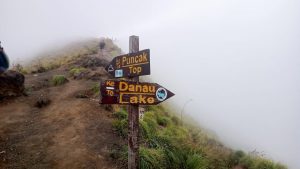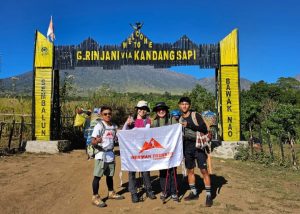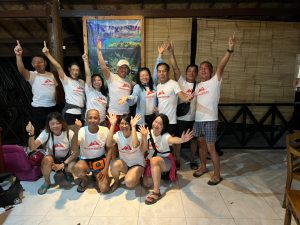All Info you need before hike Mount Rinjani
Rinjani Trekking info It is very important to know before climbers want to climb.Therefore, we summarize several popular articles that are questioned by many people who plan to visit Mount Rinjani .

Rinjani Trekking
Trekking Mount Rinjani is an unforgettable adventure that offers stunning scenery, challenging trails, and the opportunity to summit an active volcano. Here’s a general overview of what to expect when trekking Mount Rinjani:
1.Choose a Route: There are several routes to trek Mount Rinjani, with the most popular starting from either Senaru Village or Sembalun Village. The Senaru route is known for its lush forests and waterfalls, while the Sembalun route offers panoramic views of savanna landscapes.
2.Duration:Trekking Mount Rinjani typically takes 2 to 4 days, depending on the chosen route and itinerary. Longer treks usually include a summit attempt to reach the summit of Mount Rinjani, while shorter treks focus on reaching the crater rim or Segara Anak Lake.
3.Guides and Porters: It’s recommended to hire a local guide and porters for your trek, especially if you’re not familiar with the area. They provide valuable assistance, share knowledge about the surroundings, and ensure your safety throughout the journey.
4.Physical Fitness:Trekking Mount Rinjani requires a moderate to high level of fitness, especially for longer treks and summit attempts. The trails can be steep and challenging, so it’s essential to be prepared physically and mentally for the journey.
5.Camping:Most treks involve camping overnight at designated campsites along the route. Camping equipment, including tents, sleeping bags, and cooking gear, is typically provided by your trekking operator or can be rented locally.
6.Altitude: Mount Rinjani’s summit stands at an elevation of 3,726 meters (12,224 feet) above sea level, so altitude sickness can be a concern, especially during summit attempts. It’s essential to acclimatize properly, stay hydrated, and listen to your body’s signals.
7.Weather:The weather on Mount Rinjani can be unpredictable, with rain and strong winds common, especially at higher elevations. Be prepared for changing weather conditions by bringing waterproof clothing and layers.
8.Responsible Trekking:Practice Leave No Trace principles by minimizing your impact on the environment, disposing of waste properly, and respecting local customs and traditions.
Trekking Mount Rinjani is a challenging yet rewarding experience that allows you to immerse yourself in the natural beauty of one of Indonesia’s most iconic destinations. With proper preparation and guidance, it’s an adventure that you’ll cherish for a lifetime.
When is the best time to hike Mount Rinjani?
The best time to hike Mount Rinjani in Indonesia is typically during the dry season, which is from April to November. This period offers clearer skies and less rainfall, making the trekking conditions more favorable. However, it’s essential to check current weather conditions and any updates on trail accessibility before planning your hike.
Start via Sembalun or via Senaru?
Whether to start your hike via Senaru or Sembalun depends on your preference and the experience you’re seeking:
1. Senaru Route:

Gate/start point to mount Rinjani via Senaru village
This route is popular for its lush greenery, beautiful waterfalls, and cultural sights. It offers a gradual ascent, making it suitable for those who prefer a more leisurely pace and want to enjoy the scenery along the way. The summit climb from Senaru is considered less steep but longer.
2.Sembalun Route:

Gate/Start point to mount Rinjani via Sembalun
This route is known for its shorter duration to the summit and stunning sunrise views. It’s more challenging due to its steeper ascent, especially during the first day. If you’re looking for a more intense trek with fewer crowds and want to reach the summit quicker, Sembalun might be the better choice.
Consider your fitness level, hiking experience, time constraints, and personal preferences when deciding which route to take. Both routes offer breathtaking views and unique experiences, so either choice can lead to a memorable adventure on Mount Rinjani.
What need to bring during hiking mount Rinjani?
When hiking Mount Rinjani, it’s essential to be well-prepared. Here’s a list of items you should consider bringing:
1.Clothing:
- Moisture-wicking base layers
- Insulating layers (fleece or down jacket)
- Waterproof and windproof outer shell jacket and pants
- Hiking pants or convertible pants
- Long-sleeve shirts
- Hiking socks (wool or synthetic)
- Hat or beanie
- Gloves
2.Footwear:
- Sturdy hiking boots with good ankle support
- Sandals or camp shoes for resting at camp
3. Gear and Equipment:
- Backpack (large enough to carry your gear)
- Tent
- Sleeping bag suitable for cold temperatures
- Sleeping pad or insulated mat
- Headlamp or flashlight with extra batteries
- Trekking poles
- Water bottles or hydration system
- Personal first aid kit
- Sunscreen and lip balm with SPF
- Insect repellent
- Personal toiletries and hygiene products
- Multipurpose tool or knife
- Map and compass or GPS device
- Whistle
- Portable phone charger or power bank
4.Food and Nutrition:
- High-energy snacks (trail mix, energy bars, etc.)
- Dehydrated or freeze-dried meals for camping
- Electrolyte tablets or sports drinks
- Reusable utensils and food containers
5.Miscellaneous:
- Cash (for park fees, guides, etc.)
- Identification documents
- Camera or smartphone for capturing memories
- Plastic bags for waste disposal
- Personal medication and prescriptions
Ensure that you pack efficiently to minimize the weight of your backpack while still meeting your essential needs. Additionally, consider the weather conditions and season when packing your gear and clothing.
Rinjani Trekking organizer
When choosing a Trekking organizer for Mount Rinjani, it’s crucial to select a reputable and experienced company that prioritizes safety, sustainability, and customer satisfaction.

Briefing time before start hiking
Here are some steps to help you find the right trekking organizer:
1.Research:Look for trekking organizers with positive reviews and recommendations from other hikers. You can search online, read travel forums, or ask for recommendations from friends who have previously hiked Mount Rinjani.
2. Check Credentials:Ensure that the trekking organizer is licensed and accredited by the relevant authorities. They should comply with safety regulations and have experienced guides who are trained in first aid and mountain rescue.
3.Compare Packages:Review the trekking packages offered by different organizers. Consider factors such as itinerary, inclusions (meals, camping equipment, permits), group size, and price. Choose a package that aligns with your preferences and budget.
4.Communicate:Reach out to the trekking organizers with any questions or concerns you may have. Clarify the details of the trek, including the difficulty level, accommodation options, transportation, and any special requirements you may have.
5. Consider Sustainability:Choose a trekking organizer that practices responsible tourism and environmental conservation. They should promote Leave No Trace principles and minimize their impact on the mountain’s ecosystem.
6. Read Terms and Conditions: Carefully review the terms and conditions of the trekking organizer, including cancellation policies, refund procedures, and liability coverage.
7.Book in Advance:Once you’ve selected a trekking organizer, book your trek in advance to secure your spot, especially during peak seasons.

Group picture before hike
HERMAN TREKKER have a reputable trekking organizer,Experienced in organizing climbing trips since 2010.Has official permission from Mount Rinjani National Park . Be sure to research each company thoroughly and choose the one that best meets your needs and expectations for an unforgettable trekking experience on Mount Rinjani.
Rinjani Trekking package
Rinjani trekking packages vary depending on factors such as duration, route, inclusions, and amenities. Here’s a general outline of what a typical Rinjani trekking package might include:
1.tinerary:A detailed itinerary outlining the trekking route, including ascent and descent paths, camping locations, and notable landmarks.
2.Duration:Packages can range from 2 days/1 night to 4 days/3 nights, depending on the chosen route and trekking pace.
3. Route Options:Most packages offer two main route options: via Senaru and via Sembalun. Some organizers may also offer combined routes or alternative paths.
4.Inclusions:
- Accommodation: Camping equipment such as tents, sleeping bags, and sleeping mats.
- Meals: Typically includes breakfast, lunch, and dinner during the trek. Meals may be provided by the trekking organizer or prepared by the guide and porters.
- Transportation: Transfer to and from the trek starting point, often from nearby cities like Mataram or Senggigi.
- Guides and Porters: Experienced guides who lead the trek and porters who carry camping gear, food, and supplies.
- Entrance Fees: National park entrance fees and permits required for trekking Mount Rinjani.
- Safety Equipment: Basic safety equipment such as first aid kits, communication devices, and emergency supplies.
5.Optional Add-ons:
- Extra Services: Additional services such as airport transfers, accommodation before or after the trek, and rental equipment.
- Side Trips: Optional excursions to nearby attractions or cultural sites before or after the trek.
6.Group Size:
Packages may be available for solo travelers, small groups, or private tours, with group size limits depending on the organizer’s capacity and permit regulations.
7.Price:
Prices vary depending on the duration, route, inclusions, and level of service provided by the trekking organizer. Be sure to inquire about any additional costs or surcharges not included in the base package.
When selecting a Rinjani trekking package, consider factors such as your fitness level, trekking experience, budget, and preferences for accommodations and amenities. It’s also essential to choose a reputable and experienced trekking organizer that prioritizes safety and sustainability.
Rinjani Trekking Package Price
The price of Rinjani trekking packages can vary depending on several factors, including the duration of the trek, the route chosen, the level of service provided, and the inclusion of additional amenities. Here’s a rough estimate of the price range for Rinjani trekking packages:
1. 2 Days/1 Night Package:Prices typically range from $185 to $250 per person.
2. 3 Days/2 Nights Package:Prices usually range from $250 to $350 per person.
3. 4 Days/3 Nights Package:Prices can range from $285 to $450 per person.
These prices are general estimates and can vary based on the following factors:
- Route:The Senaru route may be slightly cheaper compared to the Sembalun route due to differences in logistics and transportation costs.
- Group Size:Private or small group tours may have higher prices compared to larger group tours, as they offer more personalized service and attention from guides.
- Inclusions:Packages that include additional amenities such as upgraded accommodation, premium meals, or extra services may have higher prices compared to basic packages.
- Season:Prices may fluctuate depending on the demand for trekking during peak seasons (such as the dry season from April to November) or special events.
- Trekking Company:Prices can vary between different trekking companies based on their reputation, level of service, and quality of equipment provided.
It’s essential to carefully review the details of each trekking package and consider your budget, preferences, and trekking goals when selecting the right package for your Mount Rinjani adventure. Additionally, inquire about any additional fees or surcharges not included in the base package price to avoid unexpected expenses.
How to choose the best Trekking Agency for Mount Rinjani?
Choosing the best trekking agency for Mount Rinjani involves considering several factors to ensure a safe, enjoyable, and memorable experience. Here are some steps to help you select the right trekking agency:
1.Research:Start by researching trekking agencies that operate in the Mount Rinjani area. Look for agencies with positive reviews, testimonials, and ratings from previous trekkers. You can check online platforms, travel forums, and social media for recommendations.
2.Check Credentials:Verify that the trekking agency is licensed, registered, and accredited by the relevant authorities. They should comply with safety regulations and have experienced guides who are trained in first aid and mountain rescue.
3.Experience and Expertise:Choose a trekking agency with extensive experience and expertise in organizing Mount Rinjani treks. Consider how long they have been in business, their track record of successful treks, and their knowledge of the local terrain and culture.
4.Safety Measures:Inquire about the trekking agency’s safety protocols, emergency procedures, and equipment standards. They should prioritize the safety and well-being of their clients and provide adequate safety gear and support during the trek.
5.Guide Quality:Ask about the qualifications, experience, and training of the trekking guides who will accompany you on the trek. Experienced and knowledgeable guides can enhance your trekking experience by providing valuable insights, assistance, and support along the way.
6.Customer Service:Assess the level of customer service provided by the trekking agency, including responsiveness to inquiries, flexibility in itinerary planning, and willingness to accommodate special requests or preferences.
7.Package Inclusions:Compare the trekking packages offered by different agencies, including the duration, route options, inclusions (such as meals, accommodation, permits), and pricing. Choose a package that aligns with your preferences, budget, and trekking goals.
8.Sustainability Practices:Consider whether the trekking agency practices responsible tourism and environmental conservation. They should promote Leave No Trace principles, minimize their impact on the mountain’s ecosystem, and support local communities.
9.Reviews and Recommendations:Pay attention to reviews, recommendations, and testimonials from previous trekkers who have used the services of the trekking agency. Their feedback can provide valuable insights into the quality of service and overall experience.
10.Communication: Communicate openly and clearly with the trekking agency to ensure that all your questions, concerns, and expectations are addressed before booking your trek. Clarify the details of the trek, including the itinerary, accommodation options, transportation, and any special requirements you may have.
By considering these factors and conducting thorough research, you can choose the best trekking agency for your Mount Rinjani adventure and embark on an unforgettable journey to the summit of Indonesia’s second-highest volcano.
Finally..Hopefully this article is useful for those of you who are looking for information about climbing Mount Rinjani And can be a reference in choosing a Trekking package and Trekking Organizer.